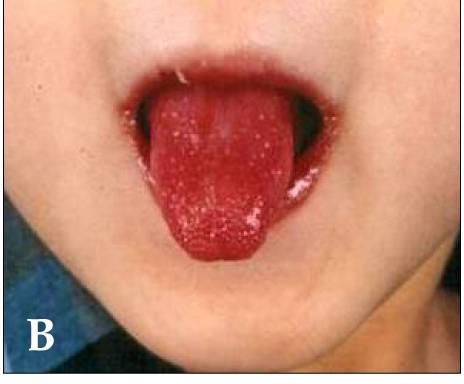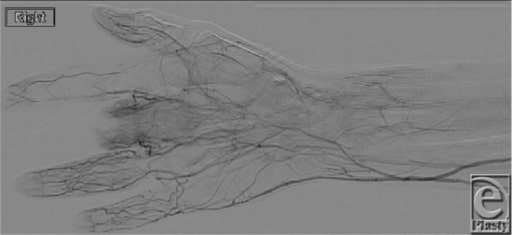Playlist
Show Playlist
Hide Playlist
Thromboangiitis Obliterans (Buerger Disease) and Kawasaki Disease
-
Slides Vasculitis Mitchell.pdf
-
Reference List Pathology.pdf
-
Download Lecture Overview
00:01 Okay, let's look at a different category here. 00:05 Let's look at Thromboangiitis Obliterans. 00:09 The epidemiology on this one is a very interesting disease, it typically will happen primarily in heavy smokers. 00:16 Typically heavy smokers who are male and who are young. 00:21 So, an individual comes to your practice and they smoke three packs a day, and they suddenly have numbness and tingling in an extremity, which is what the vessels that tend to be involved, that's very likely to be a Buerger's disease Thromboangiitis obliterans. 00:41 So we really don't have a good understanding of etiology there are certain genetic predispositions associated with certain HLA types. 00:50 What we think is happening in this disease is that there are antigenic components in cigarette smoke that in a predisposed individuals, certain HLA types binds to the endothelium and acts as a hapten. 01:03 That now that vessel wall gets recognized as being foreign due to whatever is in the cigarette antigens that are binding to it. 01:11 We recruit and activate in the predisposed individual lymphocytes and macrophages that then cause endothelial cell damage and we get thrombosis. 01:22 And so histologically what this looks like is this on the left hand side, we have a vessel with vasculitis going through it, destruction of the media and an organizing thrombus within the lumen instead organizing thrombus that can happen recurrently that is associated with the loss of vascular flow. 01:46 And you can have more than just a transient numbness and tingling, you can have actually loss of digits. 01:53 And as I say, Buerger's disease or thromboangiitis obliterans typically affects the extremities. 01:58 It can affect other vessels, but it's typically the extremities. 02:01 And we see actual gangrenous necrosis of a middle digit of the right hand and of multiple toes. 02:10 So, signs and symptoms of Buerger's disease. 02:13 intermittent claudication of feet, legs and hands and arms. 02:16 And again, it's on extremities and it's because of the intermittent formation of a thrombus. 02:20 So the patients lose blood flow intermittently. 02:26 It can progress to pain as we get necrosis and eventually ulceration or actual loss of the extremities. 02:34 Because we are damaging nerves at the same time that we are damaging the actual extremity with necrosis, you can get paresthesias, you can get abnormal tingling sensation. 02:44 Okay, so that is an example, kind of a medium vessel vasculitis that's associated with binding to endothelial cells that have been haptenated by cigarette smoke kind of a cool disease. 03:01 Alright, let's talk about Kawasaki's disease. 03:04 So this is one of the most common vasculitides of childhood, kids don't get a lot of vasculitis but when they do, it's often Kawasaki. 03:11 What is Kawasaki? Boys are more commonly affected than girls. 03:19 The vast majority of cases occur in children under the age of five. 03:24 And a notable point. 03:26 A notable point is that in adult cases, it occurs in a quarter of adult cases in patients with HIV. 03:36 So, how does it happen? We have infectious agents viruses most common but you can also have this as a result of a bacterial infection that can then trigger the elaboration of various autoantibodies, and can trigger a delayed type hypersensitivity response against cross reactive antigens. 03:54 So some infection, the body responds to appropriately. 03:57 But now that's cross reactive with self antigens. 04:02 The subsequent B cell response making autoantibodies can then cause damage to the endothelial cells and medial smooth muscle cells just like we've seen when we're talking about the conceptual basis of vasculitis. 04:15 Classic signs and symptoms. 04:17 So the kids have fever, they have a desquamative rash, they have malaise as part of the fever and systemic manifestations of cytokines. 04:27 They have very prominent erythema of the lips and oral mucosa. 04:31 So, what are shown there is a classic strawberry tongue. 04:37 They have cervical lymphadenopathy due to the activation of the little a type hypersensitivity and B cell activation. 04:43 And they will have edema the hands and feet, again, because of the systemic manifestations of cytokines elaborate in very various vascular beds. 04:52 So, the most feared complication of Kawasaki's disease is the involvement of the coronary arteries. 04:59 And if we get inflammation of coronary arteries that can lead to aneurysm formation and over time that aneurysm because of abnormal flow through the dilated vessel can cause a thrombosis. 05:10 And you can have a heart attack in a 4-year-old kid.
About the Lecture
The lecture Thromboangiitis Obliterans (Buerger Disease) and Kawasaki Disease by Richard Mitchell, MD, PhD is from the course Vasculitis.
Included Quiz Questions
What is a risk factor for thromboangiitis obliterans?
- Smoking
- Alcohol use
- Coal mining
- Older age
- Female gender
What part of the body is commonly affected in patients with thromboangiitis obliterans?
- Distal extremities
- Proximal extremities
- Abdomen
- Head and neck
- Thorax
Which patient is most likely to suffer from Kawasaki disease?
- 3-year-old boy
- 4-year-old girl
- 12-year-old boy
- 11-year-old girl
- 65-year-old man
Customer reviews
5,0 of 5 stars
| 5 Stars |
|
5 |
| 4 Stars |
|
0 |
| 3 Stars |
|
0 |
| 2 Stars |
|
0 |
| 1 Star |
|
0 |





